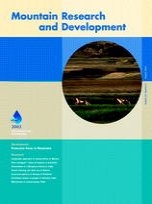In the past, transhumant pastoralists in the Indian Himalaya used resources available in various subsystems for their livelihoods. Recent sedentarization of a section of the transhumant pastoralist population resulted in competition with the existing sedentary population for resources in some areas. Resources such as grazing areas and forests are becoming less productive and can no longer cover growing demand (both human and livestock). In the Niti valley (Nanda Devi Biosphere Reserve [NDBR] buffer zone), changes in government policies during the past 50 years have produced a land-use system that is not conducive to traditional transhumant pastoralism. The present article analyzes the impact of loss of grazing area on transhumant pastoralism, the current state of monetary return from livestock rearing, and the output–input ratio in terms of energy currencies in villages inhabited by transhumant pastoralist populations and villages now practicing sedentarized lifestyles. Although small ruminant-dominated animal husbandry is providing monetary benefits to local populations, the system is consuming more resources than it produces in terms of energy currencies. The prospects for transhumant pastoralism in the buffer zone villages of NDBR are discussed.
How to translate text using browser tools
1 August 2003
Transhumant Pastoralism in the Nanda Devi Biosphere Reserve, India
Sunil Nautiyal,
K. S. Rao,
Rakesh K. Maikhuri,
Krishna Gopal Saxena
biosphere reserve
Himalaya
India
land-use change
mountain rural economy
Nanda Devi
transhumant pastoralism





